Exploring New Frontiers in Light Dark Matter Searches: The Latest NA64 Proposal
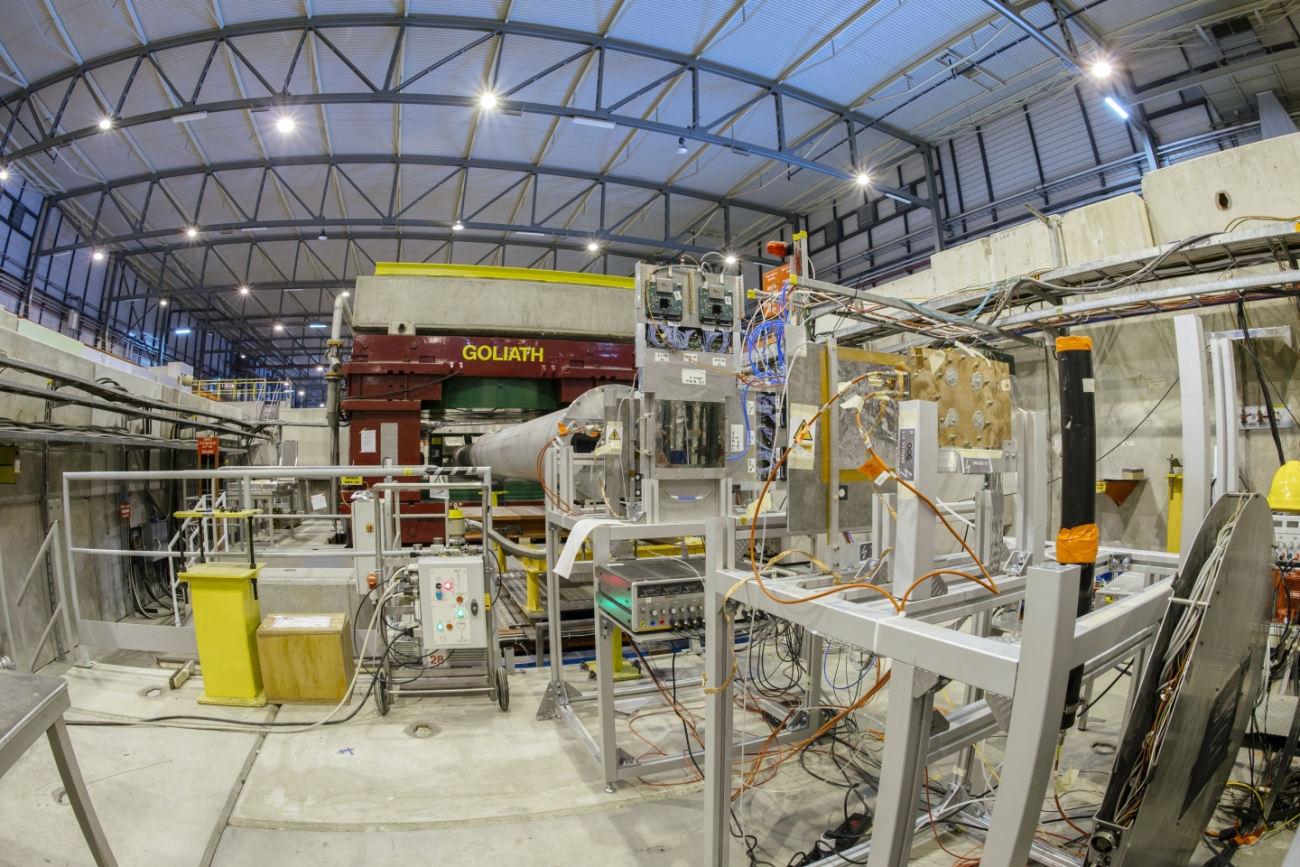
The quest to understand the nature of dark matter remains one of the most compelling challenges in modern physics. The NA64 experiment (see Fig. 1) at CERN’s Super Proton Synchrotron (SPS) has been at the forefront of efforts to explore dark sector physics, employing an innovative “missing energy” technique to probe beyond the Standard Model. The latest proposal from the NA64 collaboration represents a significant step forward in the search for light dark matter (LDM) particles through the use of low-energy positron beams.
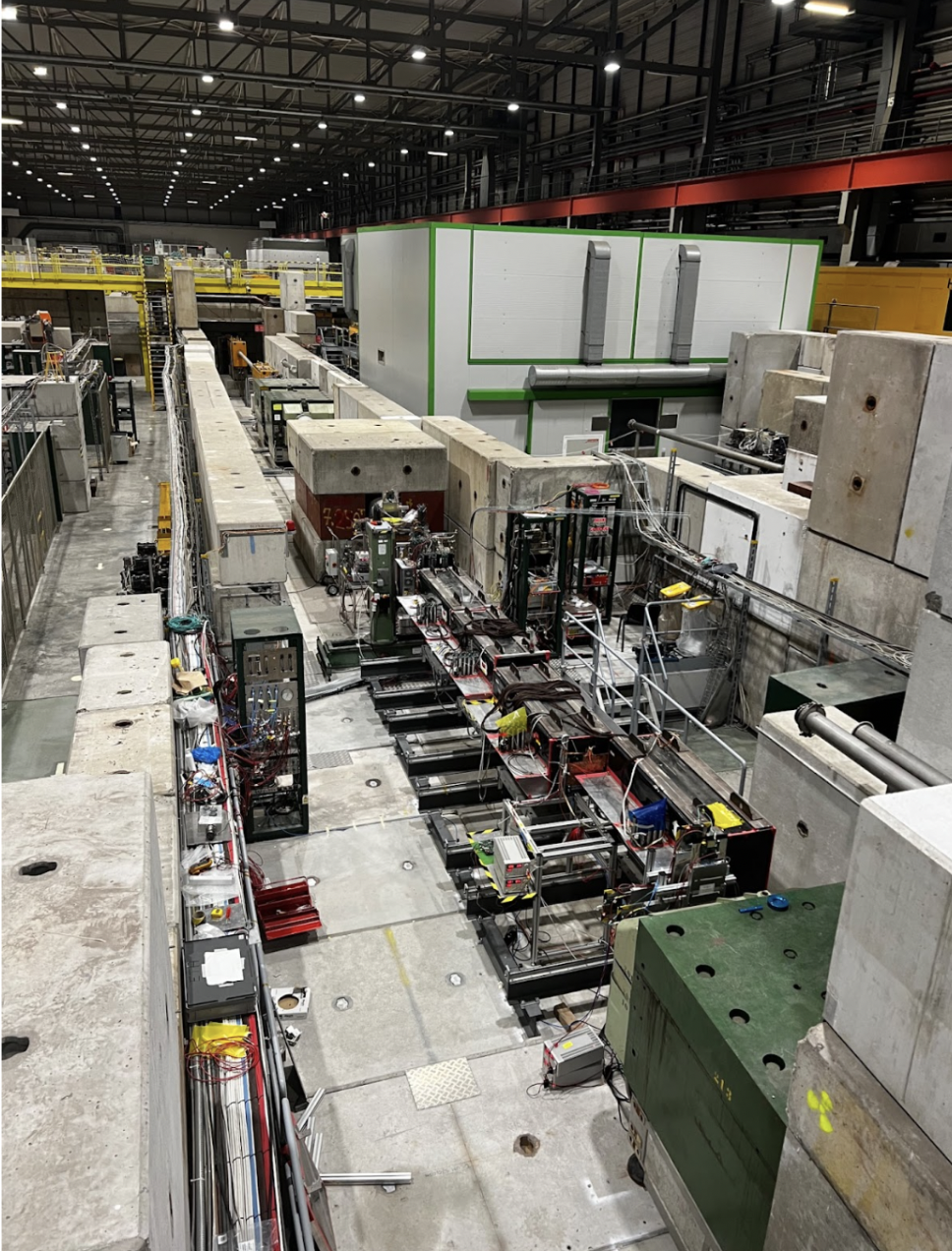
Fig. 1: The NA64 detector at the CERN North Area
Building on previous successes with electron beams, the NA64 team has introduced a novel approach based on the use of a positron beam. The new technique, based on a theoretical idea developed as a joint effort with the INFN theoretical community, aims to exploit the so-called “resonant dark-photon (A’) production channel” (e⁺e⁻ → A’ → χχ, see Fig. 2) as an effective probe to produce LDM particles. Here, the dark photon is a hypothetical particle that mediates interactions between dark matter and Standard Model states. Other than an enhancement of the cross-section, the use of a positron beam would allow, in case of a signal observation, to directly estimate the A’ mass from the measured missing-energy distribution.
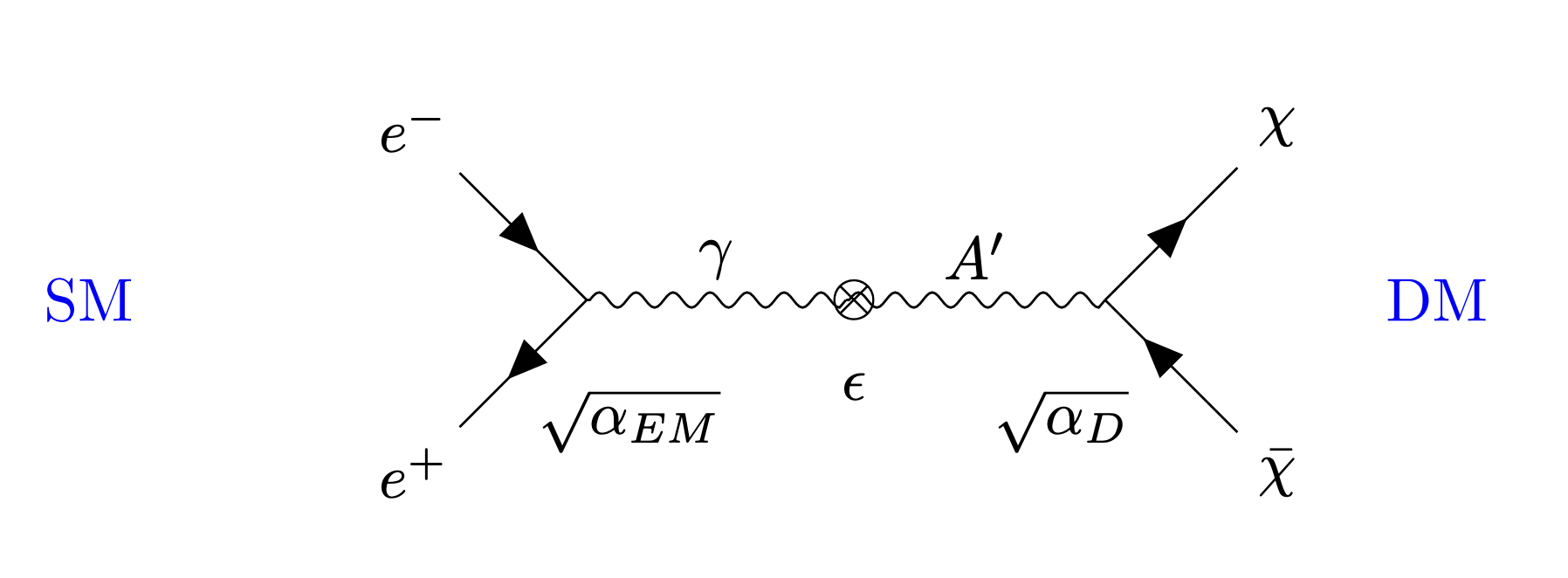
Fig. 2: Resonant production of a dark photon by the annihilation of a beam positron with an electron in the target. The diagram also shows an “invisible decay” of the dark photon into dark matter particles. The αD expresses the strength of the coupling of the dark photon to the dark matter particles.
The positron-beam program is supported by a dedicated ERC 2020 starting grant, the “POsitron resonant annihilation into darK mattER” (POKER) project, aiming to prove the new experimental technique through a dedicated measurement. After a first successful run at 100 GeV positron beam energy in 2022, NA64 recently demonstrated the feasibility of a multi-energy programme, aimed at exploring a larger portion of the LDM parameters space (see Fig. 3). This is possible thanks to the versatility and the performances of the H4 beamline serving the experiment in ENH1. The study, conducted during the summer of 2023, leveraged a beam configuration that enhances the sensitivity to dark photons with a mass of approximately 200 MeV. The NA64 experiment collected 1.6 × 10¹⁰ positrons on target in a ∼24-hour-long measurement, with beam intensity approximately 4.2 x 106 particles per SPS spill of 4.8 s.
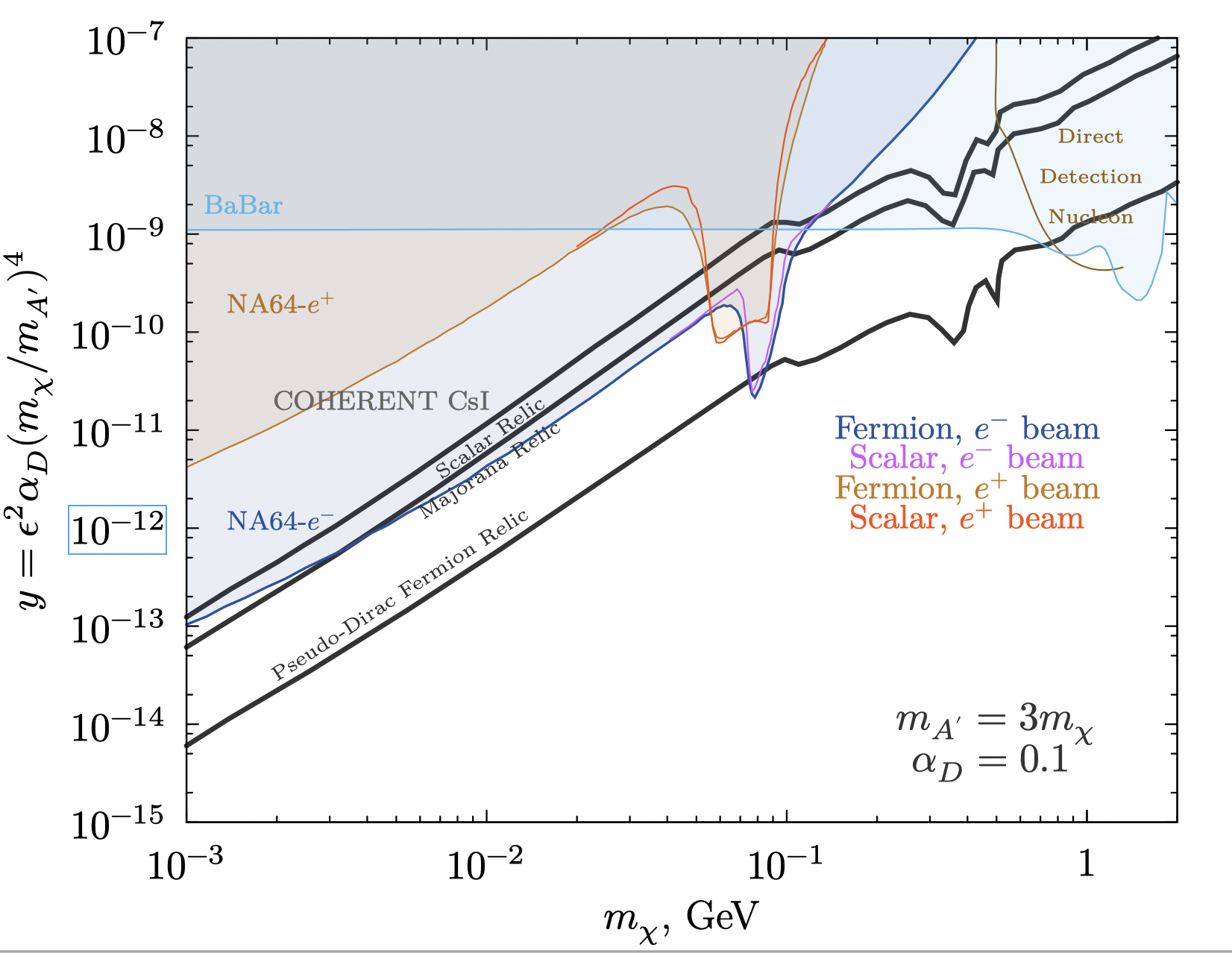
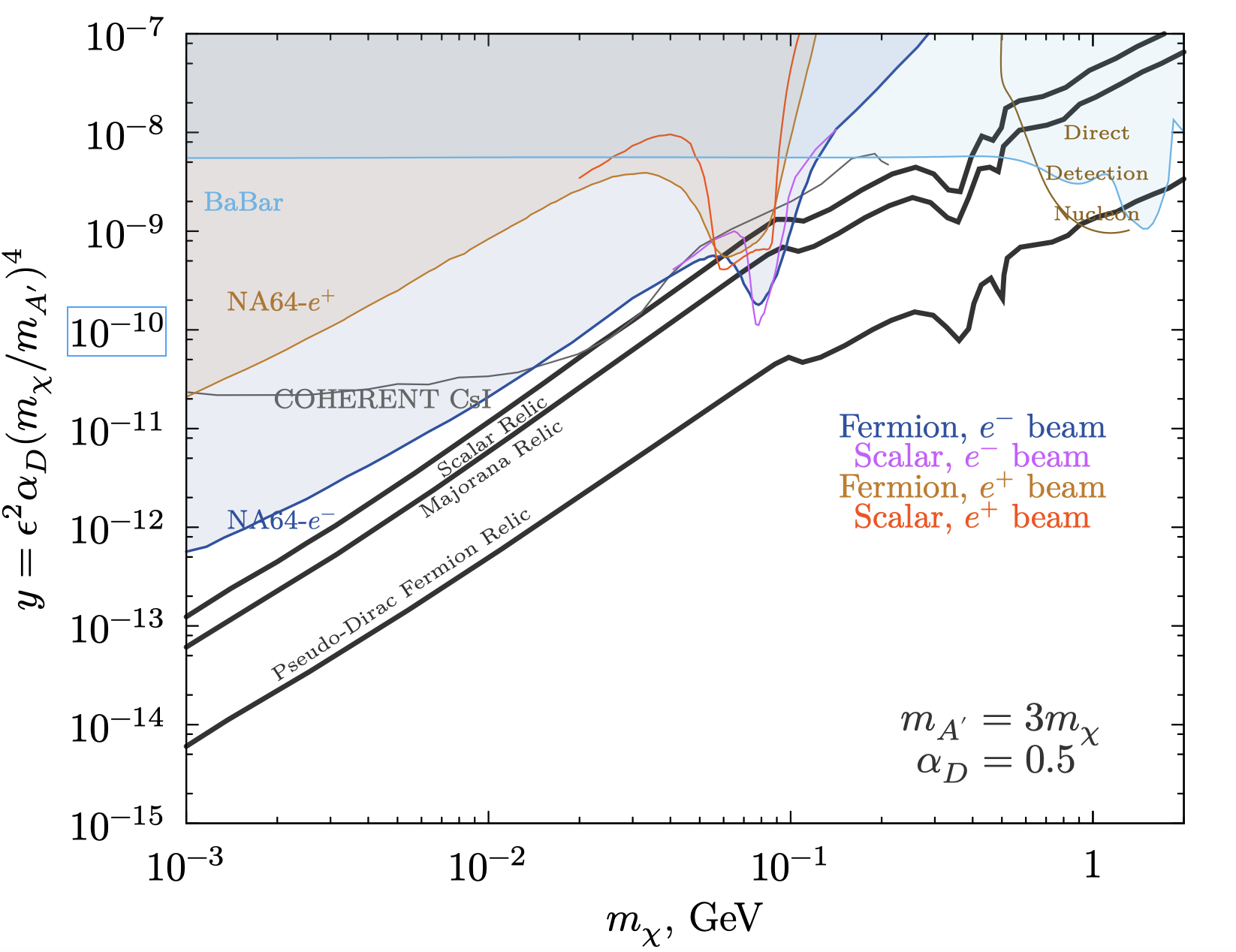
Fig. 3: The most recent NA64 limits in the y,mχ parameter space, including results from the 70 GeV/c positron beam measurement, for the two cases ⍺D = 0.1 (top) and ⍺D = 0.5 (bottom).
This preliminary effort, representing the first physics measurement of NA64 with a beam energy lower than 100 GeV, was conducted as a first step towards a possible future programme involving positron beams with energies down to 40 GeV. A blind approach was adopted for the analysis, optimizing the event selection criteria based on their impact on signal detection efficiency versus background rejection power. Particular attention was paid to optimising the detection efficiency for signals induced by positron resonant annihilation. Different strategies were adopted depending on the nature of the cut, favouring a data-driven approach where possible. Similarly, the main expected backgrounds of the experiment were evaluated with a mix of data-driven and Monte Carlo (MC)-based techniques, resulting in an overall estimate of approximately 0.09 background events. No events were found in the un-blinded signal window, resulting in new constraints in the LDM parameter space. Despite the limited accumulated statistics, a small unexplored region was examined for specific variations of the model, proving the robustness of the technique.
In addition to the physics results, this analysis provided crucial information towards the proposed positron program at NA64. The low background projections strongly support the feasibility of a full zero-background measurement in this kinematic regime, collecting up to 10¹¹ positrons-on-target. On the other hand, the data-MC comparison of the upstream nuclear interactions is critical for a future 40-GeV programme, since these processes can contribute significantly to the expected background for such a measurement. The obtained results indicated a mild underestimation of the rate of these events in Monte Carlo simulations, motivating a conservative approach in background extrapolations.
A detailed study was conducted on upstream electro/photo-nuclear interactions, which serve as the primary background sources for this analysis. This study is particularly relevant in the context of a potential future NA64e program involving positron beams with energies as low as 40 GeV. Monte Carlo simulations using the FLUKA toolkit were performed and validated using the current 70 GeV measurement. The focus was placed on events involving the primary positron beam and upstream beam-line materials, specifically those leading to electro/photo-nuclear interactions. These events were isolated by applying the same selection cuts to both data and Monte Carlo samples, mutated from those adopted in the main LDM analysis. The experimental ECAL energy distribution was compared to the Monte Carlo prediction; both were normalised to a single positron-on-target. A good agreement was observed in terms of distribution shape as well as overall normalization. The total number of events in the data sample was found to be (29 ± 1) × 10⁻⁹ events per positron on target, while the Monte Carlo prediction was (15.7 ± 0.7) × 10⁻⁹ events per positron on target. This discrepancy in the overall number of events could be due to a mismatch in the parameterization of the cross-sections for these rare processes in Monte Carlo or inaccurate modelling of the beam properties and the composition of upstream beam-line materials. Even accounting for this discrepancy, the FLUKA background estimate for the 40 GeV measurement, performed with the same simulation framework, predicts ≃ 0.1 background events for the total statistics of 10¹¹ positrons on target. Nevertheless, NA64 is currently working toward a better understanding of this, investigating e.g. the effect of a proper description of the beamline elements, including magnets, together with experts from the BE-EA department.
The latest NA64 proposal underscores the importance of innovative experimental techniques in the search for new physics. The shift towards positron beams represents a strategic expansion of the missing energy approach, opening new opportunities for discovering elusive dark sector particles. As preparations for post-LS3 data collection progress, the NA64 experiment remains a crucial player in the global effort to unravel the mysteries of dark matter.
Further Reading
-
Latest results from the electron run
Phys. Rev. Lett. 131, 161801 (2023)
https://doi.org/10.1103/PhysRevLett.131.161801 -
100 GeV positron run results
Phys. Rev. D 109, L031103 (2024)
https://doi.org/10.1103/PhysRevD.109.L031103 -
Study of hadronic background at the H4 beam line
Nucl. Instrum. Meth. A 1052, 168776 (2024)
https://doi.org/10.1016/j.nima.2023.168776 -
Preliminary results from the 70 GeV positron run
arXiv:2502.04053 [hep-ex]
https://doi.org/10.48550/arXiv.2502.04053
